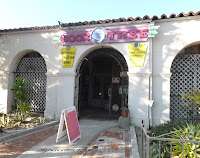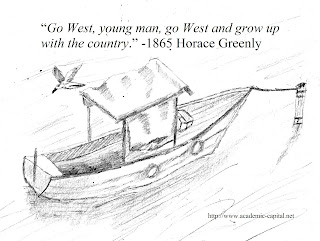American firms are not the only ones
seeking competitive advantages using innovative development in emerging markets.
German companies, with fingers in a number of different countries, are trying
to better understand how innovation and knowledge based strategies impact their
competitiveness. Research helps highlight the competitiveness of German
companies in international markets and how this impacts their firm’s ability to
compete internationally.
Innovation activities in
multinational firms do not live within a vacuum and are subject to and
influenced by the environmental impact of its host country. Innovative
activities of firms abroad depend on the technological abilities and
capabilities of the home country (le Bas & Sierra, 2002). It is difficult to develop innovation through home grown businesses in emerging
markets without the support of the home country.
Information and abilities are
transferred from the home country to the host country through the subsidiaries.
Research and development, as well as innovation activities abroad, are
associated with knowledge-seeking efforts by multinational firms (Ambos, 2005).
As such, each contributes to the methodologies organizations use to gain
knowledge and convert it to innovative development.
For example, CEOs from both Germany
and Turkey said that they will be developing closer ties in energy and
innovation development. The Turkish Industrialists and Businessmen’s
Association (TUSIAD) and the German Industrialists Federation (BDI) announced
new partnerships to help both countries succeed on February 25th,
2013 (Daily News, 2013). The two nation’s
desire increased cooperation in development research, shipping, energy and
infrastructure.
Germany being the innovative home country seeks
additional opportunities in Turkey which is an emerging economy where costs are
relatively low. This partnership helps both countries seek advantages by
complementing each other’s strengths. For example, Turkey can gain access to
technology and Germany can gain access to cheaper labor.
Research by Kampik and Dachs (2011) attempted to
explore the associations of firm characteristics, host country characteristics,
and innovative behavior in German based subsidiaries in Europe. The study
administered the communication innovation survey to 2,000 German subsidiaries
in 16 countries. Variables included
size, international market orientation, market factors hampering innovation,
cost factors hampering innovation and knowledge factors hampering innovation.
Results:
-German firms had more innovative propensity than 15
of 16 countries. The firms contributed to employment and provided new products
for market consumption.
-German companies spent more on innovation than
other companies in half of the countries studied.
-Company characteristics such as size, research and
development, international market orientation, sectoral affiliation are
associated with innovation and output intensity.
-Host countries only mildly contribute to
innovation.
-More innovation is seen in southern and eastern
European countries than northern or western countries. This has been
interpreted as easier cost of transference of intellectual knowledge to cheaper
product outputs in low cost countries.
-German firms were integrated into their host
countries innovative systems and used public funding to further their
innovative processes.
Analysis:
German companies are seeking new ways of generating
wealth and products. They are looking toward making partnership with cheaper
host countries such as Turkey in order to diversify their competitive base and make
the implementation of innovation cheaper. German firms are using the host
country’s public funding in infrastructure and other sources as catalysts for
their own growth and development. The innovative knowledge required to improve
products and services will be offered from Germany and used within the host
country.
Ambos, B. (2005), Foreign direct investment in
industrial research and development: a study of German MNCs. Research Policy, 34(4), 395–410.
Kampik, F. & Dachs, B. (2011). The innovative
performance of German multinationals abroad: evidence from the European
community innovation survey. Industrial
and corporate change, 20 (2).
le Bas, C. and C. Sierra (2002), Location versus
home country advantages in R&D activities: some further results on
multinationals’ locational strategies. Research
Policy, 31(4), 589–609.
Turkish, German CEOs
call for more cooperation on energy and innovation (2013, February 28th).
Daily News. Retrieved February 28th,
2013 from http://www.hurriyetdailynews.com/turkish-german-ceos-call-for-more-cooperation-on-energy-and-innovation.aspx?pageID=238&nID=41870&NewsCatID=345



